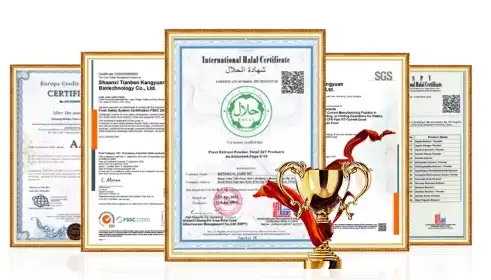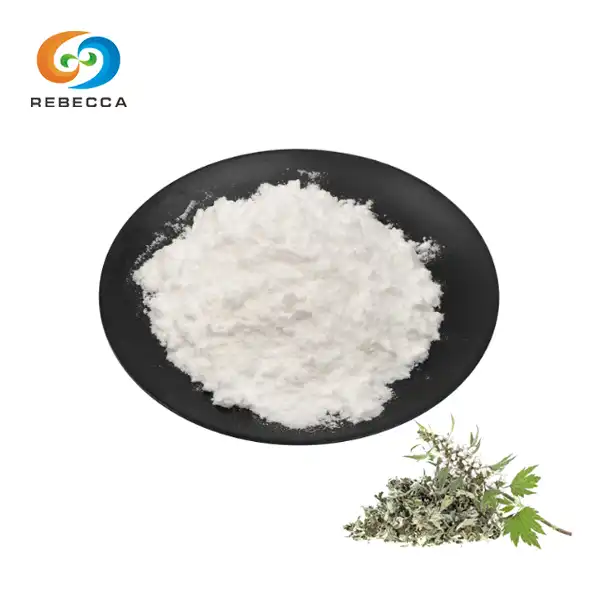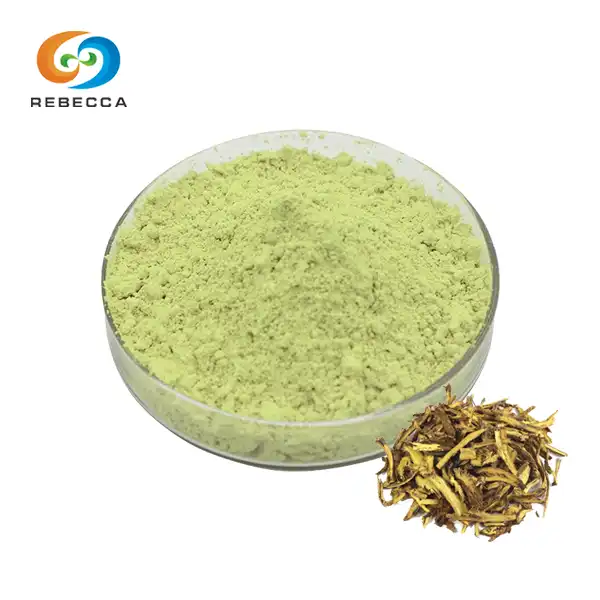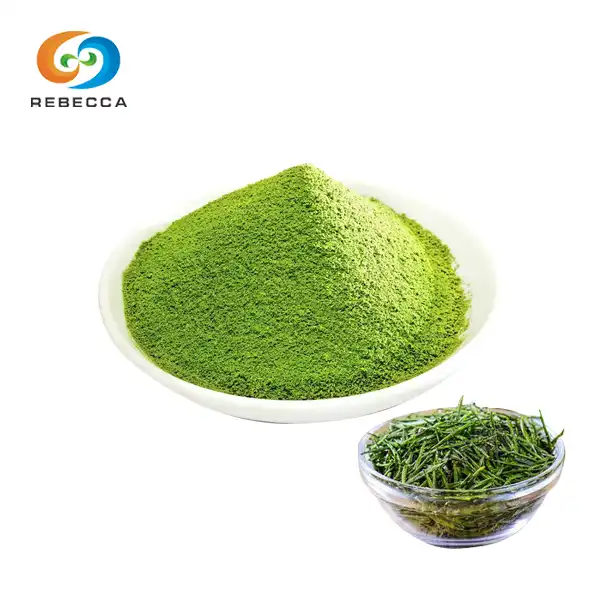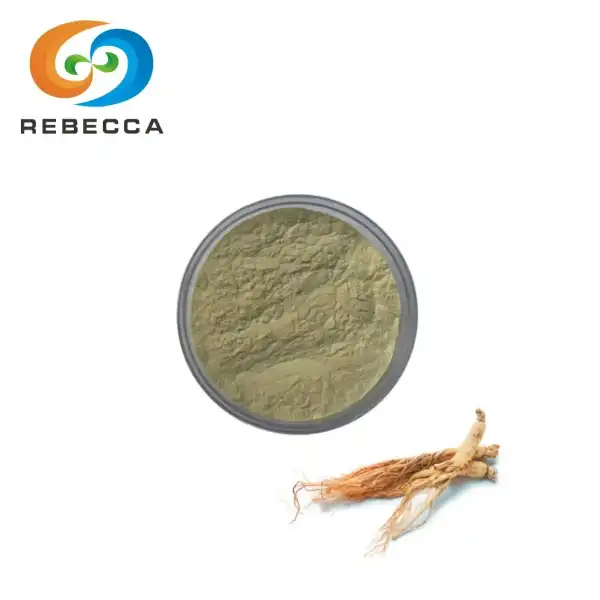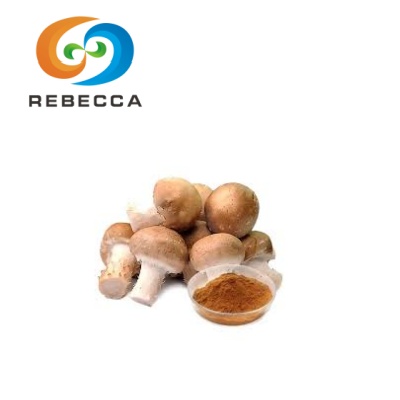How do you extract aloe vera from the plant?
Transforming fresh aloe vera gel from a plant-based extract into a commercial product requires a structured, standardized process that balances quality, scalability, and regulatory compliance. Unlike home extraction, focused on small-batch purity, commercialization of aloe vera extract prioritizes consistent raw material supply, efficient production workflows, product stability, and market-ready formulations.
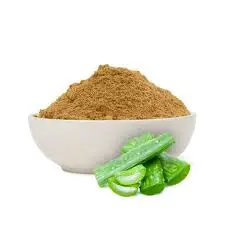
Aloe Vera Extract Powder
Product Name: Aloe Vera Extract
Appearance: Green brown fine powder
Specification: Aloin 20%,Aloin 10%
Test Method: HPLC
CAS No: 1415-73-2
Particle Size: 80 Mesh
Raw Material Sourcing and Pre-Processing for Commercial Supply
Commercial aloe vera extract production begins with reliable access to high-quality, consistent raw materials. Unlike home growers who harvest individual leaves, commercial operations depend on dedicated farms or partnerships with agricultural suppliers to meet volume demands. This phase focuses on standardizing every step of raw material management, from cultivation to pre-extraction handling, to minimize variability and prevent contamination. Poorly managed raw materials can ruin entire production batches, making this phase critical to commercial success.
After harvest, leaves are transported to processing facilities within 4–6 hours to prevent gel degradation. Pre-processing steps eliminate impurities and prepare leaves for extraction:
- Sorting: Workers remove damaged, diseased, or underripe leaves using automated conveyors with optical sensors (for large-scale operations) or manual inspection (for smaller batches). Only leaves with firm texture and no blemishes proceed to cleaning.
- Washing: Leaves are rinsed in a three-stage system: first with cold water to remove dirt, then with a food-grade sanitizer (e.g., 0.1% chlorine solution) to eliminate bacteria, and finally with distilled water to remove sanitizer residue. This step prevents microbial contamination of the gel.
- De-thorning: Mechanical de-thorners (rotating brushes or blades) trim the sharp edges of leaves. This replaces manual de-thorning to save time and reduce labor costs while ensuring uniform results.
- Storage (if needed): For facilities with intermittent extraction, leaves are stored in cool rooms (15–20°C) with 60–70% humidity for up to 24 hours. Extended storage is avoided, as it causes gel dehydration and nutrient loss.
By standardizing cultivation and pre-processing, commercial aloe vera extract operations ensure that every batch of leaves meets the same quality benchmarks. This consistency is essential for the next phase: industrial extraction, where efficiency and precision determine whether the gel retains its beneficial properties at scale.
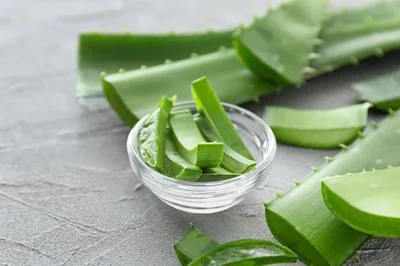

Automated Extraction: High-Yield, Low-Irritant Processes
Commercial facilities use one of two primary aloe vera extract methods, depending on product type (topical vs. oral) and scale:
Method 1: Mechanical Press Extraction (Topical Products)
Commonly used for skincare and personal care products, this method separates gel from rind using pressure:
- Leaves are fed into a roller press that squeezes out a mixture of gel and latex.
- The mixture is pumped into a centrifugal separator, which spins at high speeds (3,000–5,000 RPM) to separate the lighter gel (top layer) from the denser latex (bottom layer).
- The gel is then filtered through a series of fine-mesh screens (100–200 microns) to remove rind particles and fibers, resulting in a clear, smooth extract.

Method 2: Fillet Extraction (Oral Supplements/Juices)
Used for products intended for ingestion (e.g., aloe vera juice), this method removes latex entirely to avoid digestive irritation:
- Automated blades peel the outer rind from leaves, exposing the inner gel fillet.
- Fillet strips are chopped into small pieces and blended into a puree.
- The puree is heated gently (40–50°C) in a pasteurizer to kill bacteria without destroying nutrients, then filtered to remove remaining fibers.
Both methods include an aloin testing step, using high-performance liquid chromatography (HPLC), to ensure aloin levels are below 10 ppm (parts per million), the maximum limit set by the FDA for topical products and 0.1 ppm for oral products.
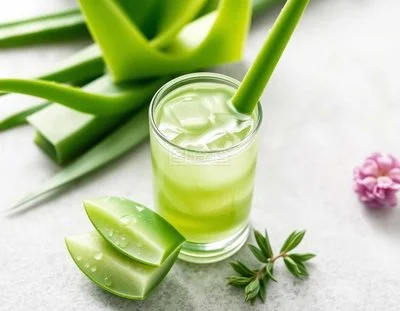
Quality Assurance
Commercial success for aloe vera extract depends on two pillars: consistent quality (to meet regulatory standards and consumer expectations) and efficient scaling (to keep costs competitive). This phase integrates rigorous quality control (QC) systems, industrial-scale production workflows, and strategic market entry plans. Unlike small-batch production, commercial operations must adapt to fluctuating demand, global supply chains, and evolving regulatory rules, all while preserving the product's integrity.
QA systems are embedded in every step of commercialization to avoid recalls and maintain brand reputation. Key components include:
- In-Process Testing: Samples are tested at every stage, raw material (leaf moisture, aloin levels), extraction (gel purity, microbial count), and formulation (pH, preservative efficacy). Testing uses methods approved by the International Organization for Standardization (ISO), such as ISO 14467-1 (aloe vera raw materials) and ISO 14467-2 (processed aloe products).
- Good Manufacturing Practices (GMP): Facilities comply with GMP guidelines set by regulatory bodies (e.g., FDA in the U.S., EMA in the EU). This includes clean production areas, trained staff, and detailed record-keeping.
- Regulatory Filings:
- Topical products: Registered with national cosmetics agencies (e.g., FDA's Voluntary Cosmetic Registration Program) and labeled with ingredient lists, warnings (e.g., "for external use only"), and expiration dates.
- Oral products: Classified as dietary supplements (U.S.) or food supplements (EU) and must meet labeling requirements (e.g., "no approved health claims" in the U.S.).
- International markets: Comply with regional rules (e.g., China's National Medical Products Administration (NMPA) for cosmetics, Australia's Therapeutic Goods Administration (TGA) for supplements).
- Third-Party Certification: Many brands seek certifications (e.g., USDA Organic, Non-GMO Project, Ecocert) to differentiate products. These certifications require additional testing (e.g., no synthetic pesticides in organic products) and audits of farming and production processes.
Derived from carefully selected Aloe barbadensis Miller plants, Rebecca's aloe vera extract powder is a green-brown fine powder standardized to contain 10% to 20% Aloin, a naturally occurring active compound responsible for aloe vera's well-known antioxidant and soothing properties. Tested by HPLC to ensure accuracy and consistency, the powder features a uniform 80-mesh particle size for excellent solubility and easy incorporation into various formulations. With the CAS number 1415-73-2, this extract offers both stability and versatility, making it ideal for use in pharmaceutical, nutraceutical, cosmetic, and beverage applications.
As a high-tech, export-oriented enterprise, Rebecca Bio-Tech integrates production, research, and development to deliver more than 100 plant extracts each year. Operating three modern production lines with an annual capacity of over 500 metric tons, the company maintains strict GMP, ISO, HACCP, KOSHER, and HALAL certifications.
For companies seeking a dependable source of high-quality aloe vera extract, Rebecca Bio-Tech offers not only superior products but also technical expertise and flexible solutions tailored to your specific needs. To learn more about their aloe vera extract powder or to request free samples, contact their professional team at information@sxrebecca.com.
